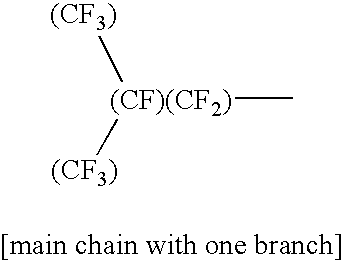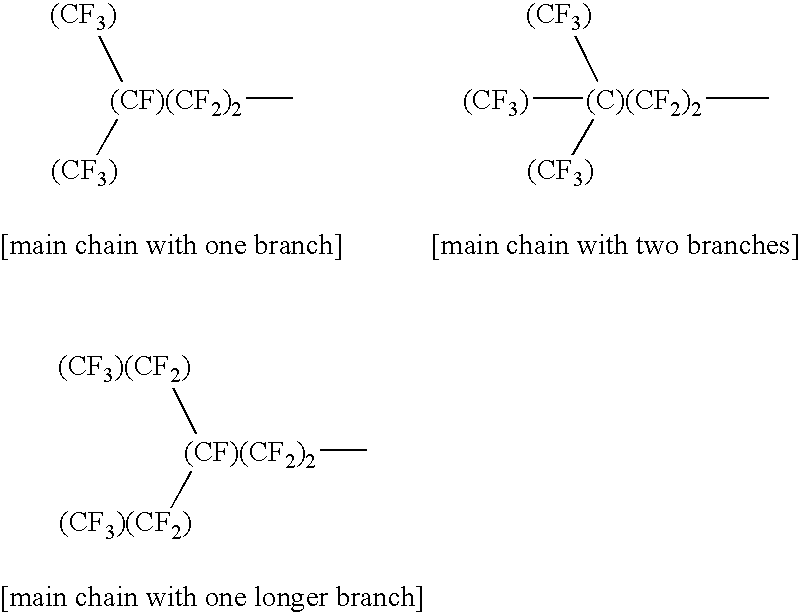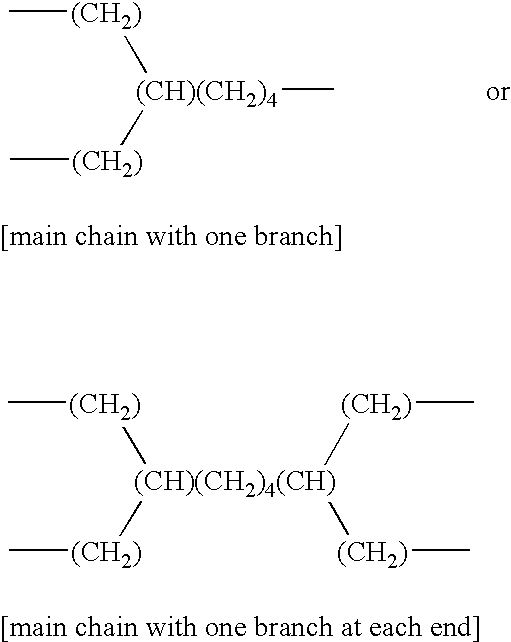Mold for nano imprinting
a mold and nanotechnology, applied in the field of nanoimprinting, can solve the problems of insufficient stability of the anti-adhesive layer according to jaszewski et al, damage to the replica, and residual polymer structure can contaminate the surface of the mold, so as to avoid any unwanted reactions and improve the density of the non-sticking functionality
- Summary
- Abstract
- Description
- Claims
- Application Information
AI Technical Summary
Benefits of technology
Problems solved by technology
Method used
Image
Examples
example 1
[0032] A silicon mold was etched to define a certain nano structure. The surface of the mold was then coated with a thin layer of nickel. The mold was cleaned in heptane.
[0033] A fluoroalkyl compound having a mercapto group, which compound was 1H, 1H, 2H, 2H-perfluorooctanethiol and had the structure:
CF3 (CF2)5 (CH2)2SH
was dissolved in heptane to obtain a 2% solution. The temperature of the solution was about 20° C. The cleaned metal mold was put into an agitated beaker containing the solution. The mold was now provided with a monomolecular non-sticking layer with the structure:
CF3 (CF2)5(CH2)2S—Ni
The mold was taken up from the beaker and was cleaned by dipping it in each of three consecutive beakers each containing heptane. The mold was then heated to 70° C. whereby the heptane was evaporated. The mold was tested in a nano-imprint lithography process and it was found that the mold withstood more than 50 imprint sequences without any detectable degradation.
[0034] The example...
example 2
[0035] The same RX-compound as described in example 1 was applied to a mold similar to that used in example 1. The mold was cleaned in heptane and then put into an oven that had a temperature of 110° C., a nitrogen atmosphere and a pressure of 75 mbar. Pure RX-compound was injected into the oven. The mold, now provided with a monomolecular non-sticking layer with a structure similar to that described in example 1, was taken out of the oven and was cleaned by dipping it in each of three consecutive beakers each containing heptane. Finally, the mold was dried by heating it to 70° C. Similar results as in example 1 were obtained upon testing.
PUM
| Property | Measurement | Unit |
|---|---|---|
| Thickness | aaaaa | aaaaa |
| Thickness | aaaaa | aaaaa |
| Covalent bond | aaaaa | aaaaa |
Abstract
Description
Claims
Application Information
 Login to View More
Login to View More - R&D
- Intellectual Property
- Life Sciences
- Materials
- Tech Scout
- Unparalleled Data Quality
- Higher Quality Content
- 60% Fewer Hallucinations
Browse by: Latest US Patents, China's latest patents, Technical Efficacy Thesaurus, Application Domain, Technology Topic, Popular Technical Reports.
© 2025 PatSnap. All rights reserved.Legal|Privacy policy|Modern Slavery Act Transparency Statement|Sitemap|About US| Contact US: help@patsnap.com



